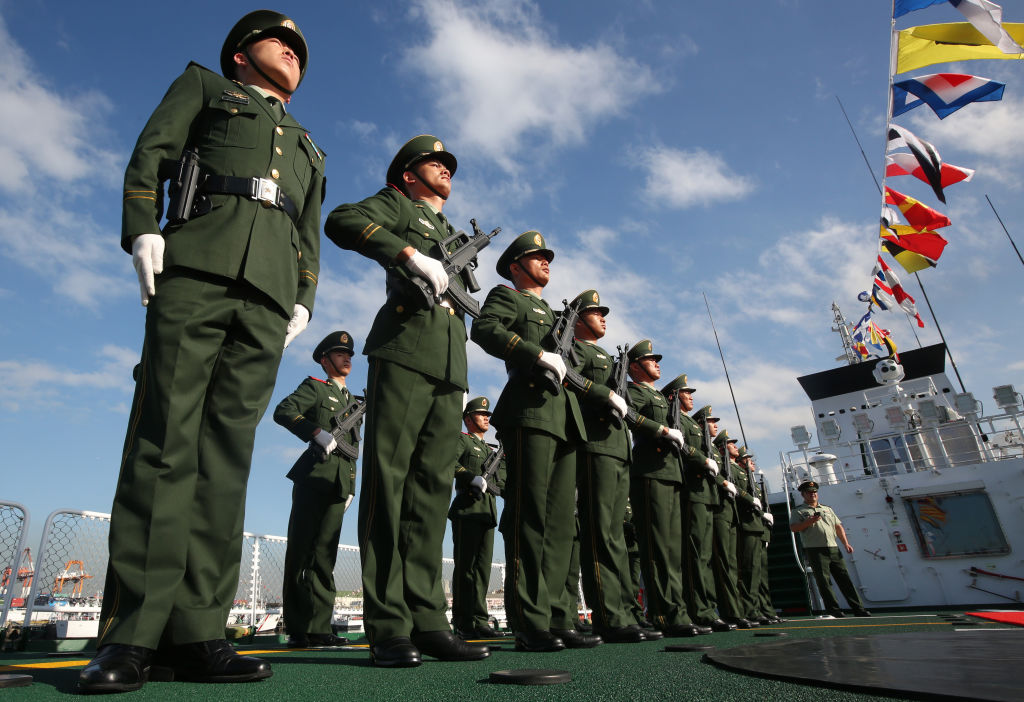
The Philippine Coast Guard’s highlighting of China’s harassment of its vessels near Second Thomas Shoal has undoubtedly boosted sympathy for Manila in its David-versus-Goliath struggle to maintain jurisdiction and sovereignty in the South China Sea. Under daily challenge from Beijing, the Philippines has run an effective name-and-shame campaign against China’s disruption and absorption tactics. Yet it remains to be seen whether increased international awareness of China’s predatory tactics will manifest in more than just moral support.
As the events of 5 August have made clear, the coast guard’s principled stand has done nothing to deter China from pressing its claims and determined efforts to force Manila to abandon its military outpost at Second Thomas Shoal. China evidently considers the coast guard to be fair game for increasingly brazen challenges by its maritime militia and its own coast guard vessels. Beijing has aggressively upped the ante at Second Thomas Shoal, in what could be the beginning of a sustained maritime blockade of the feature.
So, what should Manila do next? The immediate focus is likely to be on resupplying the beleaguered BRP Sierra Madre garrison, which the government has indicated it intends to do soon—for practical as well as political reasons. One important consideration is whether the Philippine Navy should take over the rotation and resupply role from the coast guard. That would be consistent with the Philippines’ lawfully exercising navigation rights and maritime operations within its exclusive economic zone.
It would also arguably be a calculated escalation, subjecting the Philippines to the risk that China will seize the opportunity, as it did at Scarborough Shoal in 2012, of militarising its blockade. That would bring Beijing the added advantage of proximity to the Chinese base at Mischief Reef, not far over the horizon from Second Thomas Shoal. China can overmatch any combination that the Philippine navy and coast guard can muster. Now that China has achieved ‘escalation dominance’, what can the Philippines do to press its case and maintain a tenuous hold on Second Thomas Shoal?
Given the capability asymmetry, the American back-stop role in this evolving situation is obviously critical to maintaining deterrence. Also overhanging the decision-making calculus at Second Thomas Shoal is the ghost of Scarborough Shoal, where the credibility of US defence guarantees was left in tatters, in Filippino eyes, when China took over effective control without suffering meaningful consequences. Washington’s reaction to the most recent incident at Second Thomas Shoal was contrastingly impressive in its speed and expression of common purpose with a treaty ally. But China may still be tempted to road test this renewed US commitment to deterrence.
One joint way forward for Manila and Washington would be to initiate joint naval patrols, including US Navy surface escort for resupply missions to Second Thomas Shoal. In extremis, the US could heli-lift supplies to the Sierra Madre from Antonio Bautista Air Base in Palawan. That would be expensive, but the base is a site approved under the US–Philippines Enhanced Defense Cooperation Arrangement, so it would help undergird the agreement’s importance to the Philippines, giving it a kickstart useful to both countries. The Philippines would, of course, need to agree. But some physical US involvement near Second Thomas Shoal may be essential for both deterrence and assurance.
Washington and Manila could also announce that they are consulting under Article III of the 1951 Mutual Defense Treaty. That would politically reinforce a message of deterrence to Beijing, helping to fix in Chinese minds that Second Thomas Shoal would not be a rerun of Scarborough Shoal, even though some key US decision-makers from 2012 continue to serve in President Joe Biden’s administration.
Other countries can help by giving diplomatic support to the Philippines and should consider contributing to joint naval patrols. Australia and Japan are the obvious candidates among regional US allies. Within ASEAN, Vietnam increasingly finds itself in the same boat as the Philippines, fending off increased pressure from China in the South China Sea. Coincidentally, Australia is this week sending a small naval task group to the Philippines. While unlikely to be diverted from its scheduled exercises with the AFP and US military, its presence underlines the strengthening of defence relations with Manila in recent years.
China’s foreign minister, Wang Yi, has offered bilateral dialogue with the Philippines as a means to ‘resolve differences’ in the South China Sea. But this will cut little ice in Manila, where faith in direct talks with China has all but collapsed. One prominent Filipino maritime expert advocated terminating the tortuous ASEAN–China code of conduct negotiations in the wake of Beijing’s latest provocations at Second Thomas Shoal, while the coast guard has declared its bilateral hotline with Chinese counterparts to be officially defunct following fruitless attempts at communication during the latest standoff.
In parallel, the Philippines has recourse to legal options if China persists in harassing Philippine vessels within its EEZ. Manila could initiate proceedings before the International Tribunal for the Law of the Sea challenging China’s interference with freedom of navigation. That was noted in the US State Department’s 5 August statement. A provisional determination could theoretically be obtained within four to eight weeks if the tribunal acts with urgency.
After the Philippines’ mixed experiences following the 2016 arbitral tribunal award, the government may instead choose to prioritise a new domestic law that comprehensively delimits the Philippines’ maritime claims.
The coast guard has valiantly held the Philippines’ frontline claims in the South China Sea. But fundamentally the armed forces would bear the brunt of any armed flare-up with China. The marines garrison the Sierra Madre and therefore the secretary of defence and the Philippine government must plan beyond the short-term exigencies of resupplying the crumbling ship. Unless Manila replaces the Sierra Madre with another beached ship or more durable structure, ultimately it must withdraw. For its days as a viable outpost are strictly numbered, and China’s increasingly heavy-handed tactics are asking a fundamental question. In this context, Manila needs to swallow hard and accept some calculated risks.

